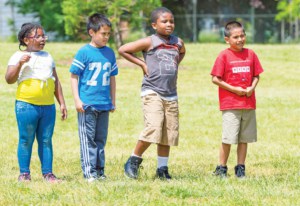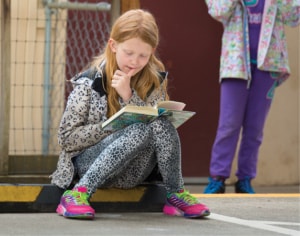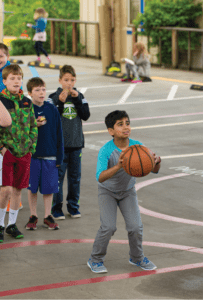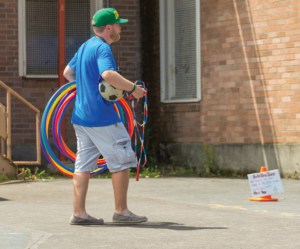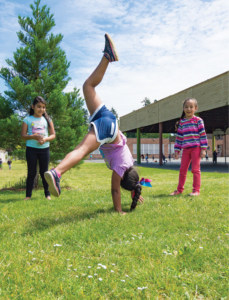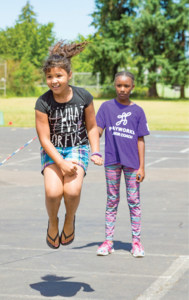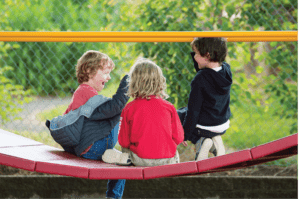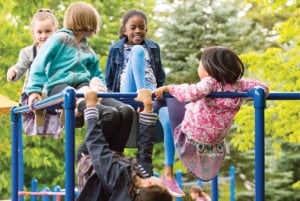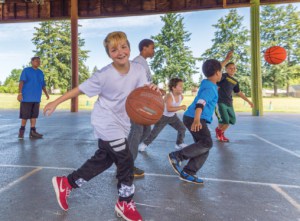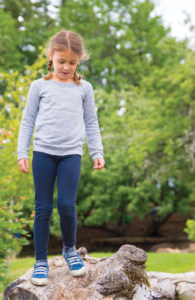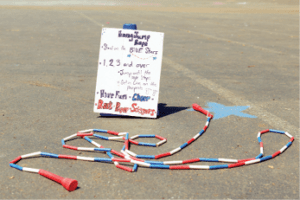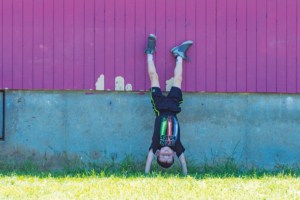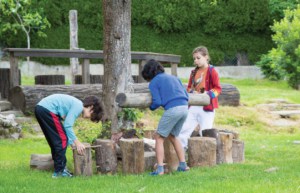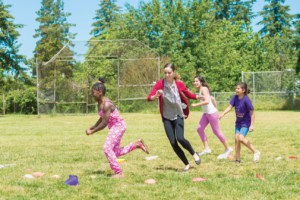
It may get a thumbs up from kids, but recess hasn’t always gotten its due from administrators. The time set aside for recess has been shrinking in many American schools as more emphasis is placed on testing and curricular goals.
Now the tide is starting to turn the other way — epitomized locally by last spring’s decision by Portland Public Schools to mandate at least 30 minutes of recess per day for all elementary school kids, starting this fall. (Oregon currently has no statewide rules on recess time, and it can vary greatly even in schools within the same district).
What’s spurring the revival? It’s pure science: Researchers from the American Academy of Pediatrics have documented that children do better in school if they get regular “brain breaks” — a chance to reboot and recharge, to move their bodies and get the wiggles out. Without those breaks, the basic building blocks of reading, writing and math can overwhelm kids, especially those ages 5 to 8.
Research also shows that recess isn’t just about getting sweaty and out of breath, either. It’s about working out relationships with peers — conflict resolution, by way of rock-paper-scissors — and collaborating. Those are the kinds of interpersonal skills that employers will look for down the line.
It comes down to this: There’s no wrong way to do recess. Case in point: we visited both the French American International School (FAIS) in SW Portland and Rigler Elementary School in NE Portland. The two schools are very different — one private, one public, one language-focused and one where a big chunk of the kids come from families where English is not the first language at home. Recess looks different at these schools, as our photos show, but it’s equally beloved in both.
At FAIS, kids get between an hour and a half and an hour of recess a day, depending on their age. It’s mostly unstructured time, leading to creative pursuits, from collaborative fort-building to epic (yet somehow orderly) games of H-O-R-S-E on the covered basketball court. (Of course, they might call it C-H-E-V-A-L).
At Rigler, coaches from the nonprofit Playworks program (with an able assist from handpicked, specially trained 4th and 5th graders) lead kids and their teachers in classic playground games, from double Dutch and foursquare to all varieties of tag. At the end of the period, everyone takes a deep, centering “volcano breath” together before heading back inside.
At each campus, kids are on the move — and when the bell rings, that’s what matters.
Hover your cursor over each picture for the caption.
- Top 5 Kid-Friendly Spots for Ear Piercing - August 30, 2023
- Top 5 Fall Color Hikes - October 31, 2021
- Going Geocaching with Kids - July 5, 2020



